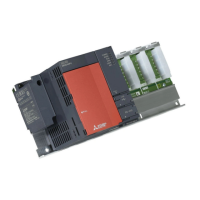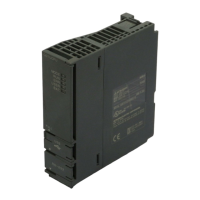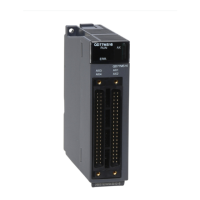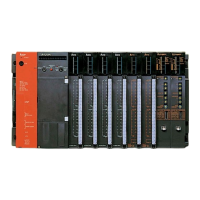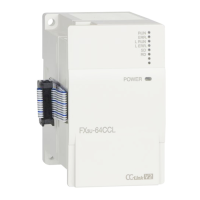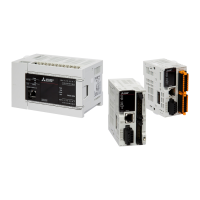1
2
3
APPEN-
DIX
6
7
8
Appendix 3 Method of Replacing Basic Model QCPU or High Performance Model QCPU with Universal
Model QCPU
Appendix 3.4 Functions
APPENDICES
App - 42
(3) Advantages and disadvantages when using the double-precision floating-point data of
the Universal model QCPU
TableApp.32 shows the advantages and disadvantages when executing the double-precision floating-point opera-
tion instructions in the Universal model QCPU.
If higher accuracy is required in floating-point operations, it is recommended to replace the instruc-
tions with the double-precision floating-point operation instructions.
*1: The processing speed of the double-precision floating-point operation instructions in the Universal model QCPU is higher
than that of floating-point operation instructions using internal double-precision operations in the High Performance
model QCPU.
TableApp.33 shows the comparison between single-precision and double precision floating-point data.
TableApp.34 Advantages and disadvantages when using the double-precision floating-point operation instructions
Advantage Disadvantage
The results are more accurate than those of the
single-precision floating-point operation
instructions.
The instruction processing speed is slower than that of the single-
precision floating-point operation instructions.
*1
Double-precision floating-operation data use twice as many word device
points as single-precision floating-operation data.
TableApp.35 Comparison between single-precision and double precision floating-point data
Item
Single-precision floating-point
data
Double-precision floating-point
data
Word point required for data retention 2 words 4 words
Setting range
-2
128
<N -2
-126
, 0,
2
-126
N<2
128
-2
1024
<N -2
-1022
, 0,
2
-1022
N<2
1024
Precision (number of bits)
Mantissa 23 bits 52 bits
Exponent 8 bits 11 bits
Sign 1 bits 1 bits
Instruction processing
speed (Q04UDHCPU/
Q06UDHCPU) (Maximum)
Data comparison (Conductive
status) (LDE>= / LDED>=)
5.5 µs 9.0 µs
Data transfer
(EMOV/EDMOV)
0.019 µs 5.0 µs
Addition (3 devices)
(E+ / ED+)
0.0665 µs 9.2 µs
SIN operation (SIN/SIND) 5.7 µs 13.8 µs

